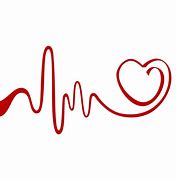How to stop Atrial Fibrillation episodes
Lower your Risk of stroke and A-Fib
By 2030, over 12 million people will have A-Fib according to the Harris Poll.
82% of people don’t know what to do about their symptoms they were experiencing. 61% of the people today are unaware of Atrial Fibrillation. That’s hard to believe since there are 6.1 million people in the United States that have it and the numbers are staggering.

Because of the risk of abnormal heartbeats as well as rapid heartbeats, any exercise program should start out easy and work up slowly. Here’s how to stop a-Fib episodes, you can do this with breathing and moderate exercising such as yoga, or try out a rowing machine, they are great for your cardio, and they work 86% of your muscles. I have one and it’s so easy and fun to exercise now. Exercise helps lower your risk of stroke and A-Fib.
Many fitness exercise trackers are available to help you monitor your heart rate during walks and while exercising. Many of them also record detailed heart rate statistics that you can view through an app on your smartphone, tablet, or home computer.
We begin finding ways to get our episodes under control, I wanted to share this below.
Here are 4 ways to stop atrial fibrillation!
- Slow breathing- slow, focused, abdominal breathing may be enough to relax you and your heart. Grab some organic stress relieving tea and take a moment for yourself, a time out.
- Vagal maneuvers- for some people who have paroxysmal a-fib, certain maneuvers may help reset your heart back into rhythm. The word Vagal comes from the vagus nerve, the secret weapon in fighting stress. Its function is through deep, slow belly breathing and exhale longer than you inhale.
- Yoga- if you’re in the middle of an a-fib episode, a little gentle yoga may help settle your heart. Just by focusing in the now and breathing deeply you may reset your heart rhythm.
Arrythmia (Irregular heartbeat) Yoga is doctor recommended
A-Fib (Atrial Fibrillation) is a common heart rhythm disorder that can increase your risk of stroke. In atrial fibrillation, blood can pool in the heart’s upper chambers and form blood clots. If a blood clot forms in the left side upper chamber, it could break free from your heart and travel to your brain causing a stroke.
People can get tested, diagnosed and treated early on. Chronic and severe A-Fib can progress and weaken the heart’s wall if it isn’t treated. Mainly because the heart is working harder to get the blood flow through it.
4 types of Atrial Fibrillation
- Paroxysmal atrial fibrillation- A type of irregular heartbeat. When your heartbeat returns to normal within 7 days, on its own or with treatment.
- Persistent atrial fibrillation- This is diagnosed when A-Fib symptoms last longer than one week. This condition is not likely to resolve on its own and you’ll need treatment to restore normal heart rhythm.
- Permanent atrial fibrillation- Permanent or chronic A-Fib is diagnosed when the normal heart rate cannot be restored after trying many different treatment options.
- Long-term persistent atrial fibrillation- This occurs when A-Fib symptoms are continuous and last for 12 months or longer without resolving on their own.
Add Yoga to your routine!

Rather than prescribing medication, many doctors are turning to more alternative methods and yoga is at the top of the list.
Yoga also offers many mental benefits, which include helping to decrease anxiety, stress, and depression.
The quality of my life changed drastically since starting yoga. I have a newfound energy and can now cope and manage my life. Diet and exercise have played a big role in my new lifestyle.
Yoga is teaching me to strive for good mental health and it’s a fundamental piece of the puzzle for me in combatting a-fib daily.
A short interjection,
I’m writing this post not only to heighten awareness of this particular disease but because I’d also like people to be more aware of certain foods and drinks to avoid, some of which can trigger A -Fib episodes.
Adjusting to life with an irregular heartbeat for some people is difficult enough and if there’s something we can all do to reduce the symptoms and lower the risks (stroke), well let’s just say, I’m willing to share the love.
Changing your diet can lower your symptoms
If you have A-Fib, then you have been informed by your cardiologist how important it is to get exercise to minimize risk factors.
Diet and fitness should be at the top of your list (besides medication prescribed by your physician) to lower your risk of stroke.
Foods to avoid (All Processed Foods)


Processed Foods Lead to Stroke
If you must eat them, do it rarely
Basically, you should avoid trans fats, they are the most dangerous fats. They are found in margarine, vegetable oils, certain crackers, cookies, chips, doughnuts and any fried foods.
Canned, packaged, and processed foods often contain high levels of sodium.
Fatty cuts of beef, pork and wild game are high in cholesterol which contributes to coronary artery disease.
Cranberry juice, chocolate, processed and salty foods, some teas, soda, gluten, grapefruit.
Beverages to avoid
Take everything in moderation
Alcohol tops the list of beverages to avoid on an atrial fibrillation diet.
Coffee-is another drink that you should gage on your own experience. One to two cups a day shouldn’t bring an onset of an episode, but if it does, then stop drinking it. Everyone is affected differently, and you need to be the judge.
Try to stay away from soda, all of the sugar isn’t good for anyone, and it too could be a trigger.
Check labels on certain bottles of water, and always stay hydrated.
Have concerns about A-Fib?
- Can you drive with A-Fib?
In general, yes. But if episodes of A-Fib cause dizziness and fainting, you need to stop driving entirely. Discuss it with your doctor.
- Can you travel on a plane?
People with A-Fib can generally fly without issues. Patients should only fly if their disease is under control. High altitude may worsen some types of arrhythmias.
- Can you exercise with A-Fib?
Exercise is good for your heart, but if your heart rate goes up, will that trigger the irregular pattern of atrial fibrillation? On the flip side experts say physical activity is usually good for people with A-Fib.
What are some triggers?
Anything that speeds up your heart is a trigger. Drinking a lot of caffeine, such as coffee #Ad tea,
- Drinking excessive amounts of alcohol, mostly binge drinking.
- Dehydration (never get dehydrated)
- Smoking restricts your blood vessels and can lead to stroke or heart attack.
- energy drinks
Some Symptoms of A-Fib include
- Irregular heartbeat

Symptoms of A-Fib - Chest pain
- Faintness
- Light headedness
- Dizziness
Heart Healthy Foods
Here are some heart healthy foods that are low in vitamin K (vitamin K lowers effects of blood thinners)
Bananas, carrots, cauliflower, corn, celery, green beans, mushrooms, peas, onion, pumpkin, potatoes, red cabbage, radish, tomatoes.
Carbs to Avoid
Avoid refined carbs, trans fat, msg, gluten, casein, excessive sodium, (green salt is all natural)
Avocado, green tea, kiwi, liver, kale, Brussel sprouts, collard greens, lentils, lettuce, mustard greens, broccoli, cabbage, chickpeas, corn chive.
It will take a while to get used to, but you’ll succeed in a heart healthy #Ad routine.
Lean Meat High in Protein
Try to eat white meats
Salmon, albacore, pork chops, turkey, chicken, beef in moderation, lamb, prawns in moderation, mussels, casein is a meat alternative, tofu.
Conclusion

Exercise and Diet!
Eat a healthy balanced diet. If you find that you can’t do most exercises, improvise and treat yourself to a rowing machine that’s easy and fun to use. They are affordable with low monthly payments, I had to have one and really enjoy it, and I’ve lost 16 lbs. off of my stomach!
To all who have Atrial Fibrillation and to all who do not, I wish you success and happiness, most of all a long and healthy life. I hope you walk away feeling better informed and more aware of the dangers of A-Fib but the knowledge to lower your chances of stroke.
If you have any questions or want to leave a comment below feel free, if you’d like to check out my other website, go to www.yogahealthbenefitsarticle.com (more about A-Fib and Yoga).
I’d really appreciate your feedback so please leave a comment below. Tell us if you have a-fib under control and what you did to accomplish that?
Wishing you all the best,



